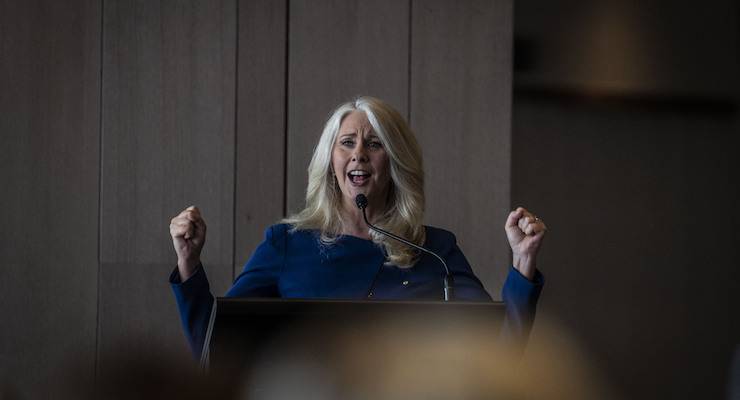
Tracey Spicer’s credibility as a figurehead in Australia’s Me Too movement again came under fire yesterday, with the media personality reportedly threatening to sue three women, including sexual harassment survivors and a former source.
One of the women, who had her identity revealed in a preview screening of Spicer’s ABC documentary Silent No More, told News.com.au she had received a legal threat from Spicer’s lawyers.
Taking action against a source — through legal or other means — is something of a journalistic cardinal sin. But Spicer is hardly the first to do it.
When Geoffrey Rush brought his (ultimately successful) defamation claim against Sydney’s Daily Telegraph following a story alleging he sexually harassed actress Eryn Jean Norvill, the paper brought a cross-claim against one of its sources, the Sydney Theatre Company (STC).
That claim, thrown out by Federal Court Judge Michael Wigney who labelled it “weak and tenuous”, would have forced the STC to help the Tele pay Rush any damages awarded.
In other cases, the relationship between reporters or a publication and their sources have turned sour. Marcy Wheeler, an American independent national security blogger revealed one of her sources to the FBI last year over concerns about their connections with Russian interference.
Meanwhile, outlets that published material revealed by WikiLeaks have turned on founder Julian Assange. When Assange was arrested in April following the end of a seven year stint in the Ecuadorian embassy, the Washington Post published an editorial denouncing him as “not a free press hero” who was “long overdue for personal accountability”.








Does this story amount to news? If so the readers are presumed to be imbeciles.
Regarding the career or our increasing litigious world the words “trust me” are of diminishing value. Let the leaker beware of future legal action. Simple eh! Or do we intend to (seriously) discuss morality; something akin to the introduction of The Devine Comedy?
Cannot believe I am reading this offensive slanted drivel in Crikey. The author seems to me to be inflating the outrageous act of threatening a sexually abused woman with legal action with unrelated actions. Does the author have a relationship with Ms Spicer? Do better. Michael
Ah, autocorrect is wonderful. In the above comment ‘inflating’ is meant to be ‘conflating’.